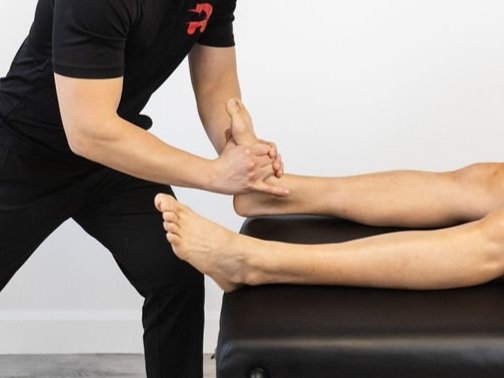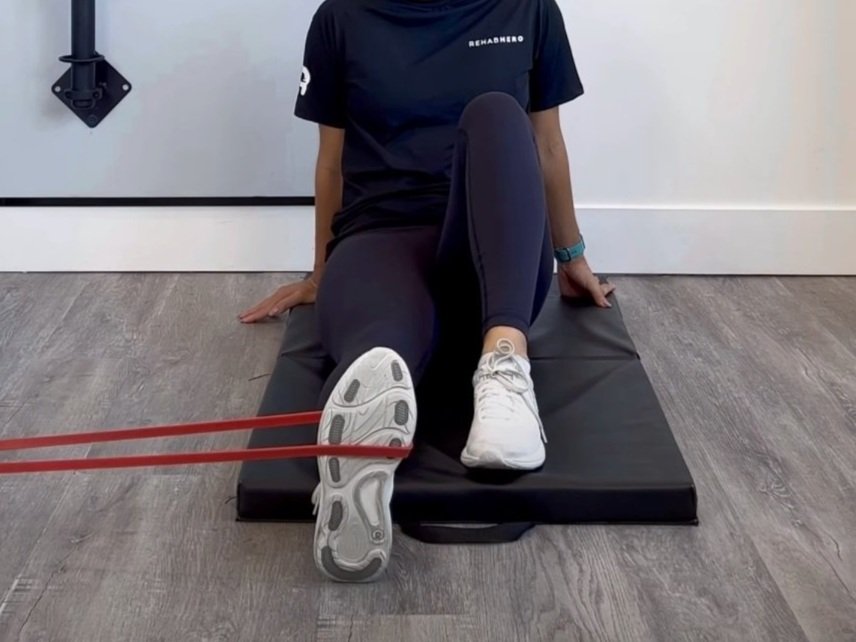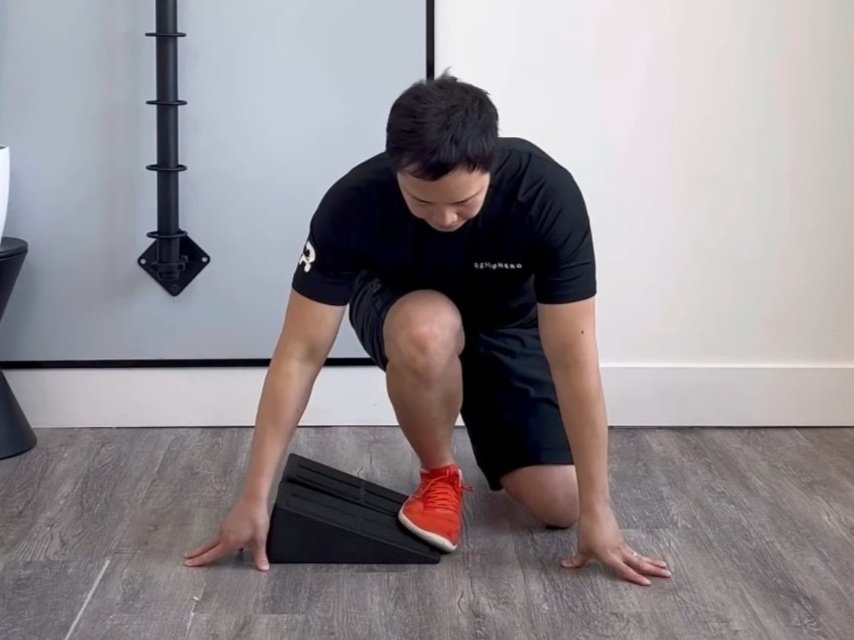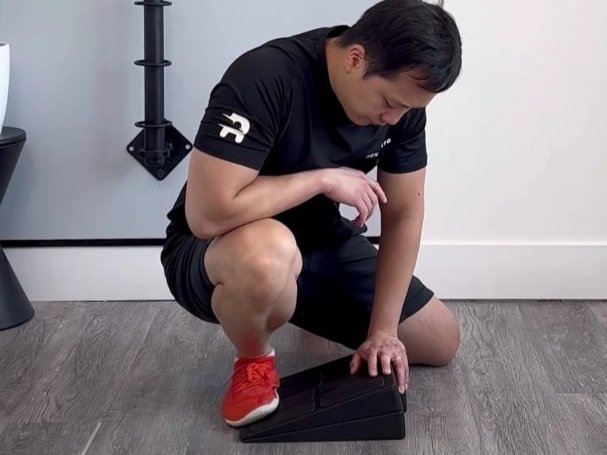Ankle Sprains
How to Deal with Ankle Sprains
What to Expect During Recovery
Have you ever Sprained your Ankle?
Most people in their life may have experienced an ankle sprain, possibly while walking on an uneven surface, playing basketball, landing funny after a layup or while playing soccer. Oftentimes it is referred to as a twisted ankle. After twisting your ankle the next few days it was probably a little swollen, hard to apply pressure while walking, and quite painful. In about a week your swelling has gone down and ta-da! You’re able to walk again! It's all good to go and play your sport and continue with your daily activities, right? Nope! Not exactly, like Drake once said "like a sprained ankle, boy I ain’t nothing to play with" an ankle sprain is not an injury to be taken lightly. Keep reading if you’re interested in learning the different types of ankle sprains and ways to manage ankle sprains, and why rehabilitation of the ankle is important.
What is an Ankle Sprain?
An ankle sprain can occur when making rapid movements in shifting patterns while your feet are planted. Resulting in the ankle to roll and apply torque into different ranges of the ankle, this includes either plantar flexion and inversion or dorsiflexion and eversion. An inversion ankle sprain is the most common type of ankle sprain. In an inversion ankle sprain, the ankle is forced into plantarflexion and inversion causing the ankle to roll outwards and the heel turning inwards. As a result, the soft tissue structures on the outside of the ankle get stretched past their limits resulting in partial tears or complete tears - most commonly in the Anterior Talofibular Ligament (ATFL).
The Different Types of Ankle Sprains:
There are different types of ankle sprains, however, the most common form of ankle sprain is an inversion sprain. Each ankle sprain type has a unique mechanism of the injury which results in different planes of the ankle being affected. Also, different ligaments and muscles may be affected.
High Ankle Sprains - One of the least common types of an ankle injury. This ankle injury can occur if there is an abrupt dorsiflexion force and excessive external rotation resulting in damage to the Anterior-Inferior Tibiofibular Ligament, interosseous ligament and membrane.
Eversion Ankle Sprains - Another uncommon ankle injury is the eversion ankle sprain. In this ankle sprain, the ankle is torqued inwards and the heel moves outwards resulting in high force through the inside of the ankle. The ligament that is most commonly affected during this type of injury is the deltoid ligament. The deltoid ligament is one of the strongest ligaments in the ankle complex and it comprises the anterior tibiotalar ligament and tibiocalcaneal ligament.
Inversion Ankle sprains - The mechanism of Injury for inversion ankle sprains is when the ankle is abruptly moved into inversion and plantar flexion. Ligaments that are usually damaged are as follows, anterior talofibular ligament, calcaneofibular ligaments, and posterior talofibular ligament.
Signs and Symptoms of Ankle Sprain:
Ankle sprain injuries may exhibit the following symptoms depending on the severity of the injury
● Painful and weakness immediately after the mechanism of injury
● Sensitive to touch
● Swollen and discolouration
● Hard to apply pressure with an injured ankle and foot
● Travelling pain into the shins
● Instability and feeling of giving away in the ankle
● An audible popping sound or sensation at the time of injury
Risk Factors:
There are several risk factors associated with ankle injuries, below are a few examples:
1. Previous Ankle Sprain - One of the more common risk factors, a previous sprain makes you more susceptible to reinjuring the ankle due to imbalance and lack of stability through muscles and ligaments, as well as a decreased feedback loop between the nerve fibres and brain - this is also known as proprioception. In other words, the nerves are not able to communicate to the brain about the positioning of the ankle joint as effectively after an injury.
2. Height and Weight - Being taller and heavier in weight increases the chances of spraining the ligaments on the lateral aspect of the ankle when the ankle is displaced into inversion and plantar flexion. Being taller increases the magnitude of inversion torque and puts excessive strain on the ligaments of the ankle complex that are responsible for resisting inversion.
3. Duration of Competition & Intensity of Training/Activity - Individuals are more likely to injure their ankle during competition as opposed to training. Factors that play a role in this are the duration of the competition, fatigue, individual conditioning levels, and uneven surfaces etc.
Ankle Sprain Classifications:
An ankle sprain can be graded on a 3-grade classification.
Grade 1: Microscopic injury with no stretch to the ligament
Grade 2: macroscopic tears, however, the ligament is still intact
Grade 3: A complete rupture of the ligament
A Registered Massage Therapist, Physiotherapist, and Chiropractor can assess the ankle through orthopedic testing and movement assessment to help determine the severity of the ankle sprain. To name a few, your practitioner may use special tests to help with making the proper clinical impression or diagnoses. These tests include the anterior drawer test and talar tilt test. It is also important to help rule out any potential fractures of the ankle during ankle sprain testing.
Treatment Options:
Treating an ankle injury is based on figuring out the mechanism of injury. This will give a better understanding of the possible structures involved. The ligaments lack vascular supply and as a result, it may take time to heal. The severity of the injury plays a role in recovery time. On average it may take anywhere between 2-8 weeks of active recovery and rehabilitation to heal.
After a suspected ankle sprain, you can relieve pain and swelling and promote healing and flexibility with RICE—Rest, Ice, Compression, and Elevation. During this time it is important to receive massage therapy, physiotherapy or chiropractic treatments. These practitioners will be able to further assess the type of ankle injury, the severity, and the structures involved. Your clinician may look for things such as postural sway, poor hip mobility, knee valgus, and pes planus which may potentially play a role in an injury.
They can also do a global assessment to see any other biomechanical factors that may have contributed to the injury. Your therapist may use different modalities such as sports massage, myofascial release, joint mobilizations, and medical acupuncture to help with the management of ankle sprains. The use of exercise prescription may also be utilized to help with recovery, improve movement patterns, and help build better strength and balance in the ankles.
Rehab Exercises for Ankle Sprains:
The exercises prescribed will depend on your assessment findings. Even though pain may present similarly from person to person, the reason why it started happening will vary greatly. That being said, here are some basic exercises that are sometimes prescribed at the beginning of a rehab program for ankle sprains:
1. Ankle ABC’s
2. Gas Pedals
3. Ankle Sways
You can watch our full video on ankle sprains made by Toronto chiropractor Dr. David Song.



















